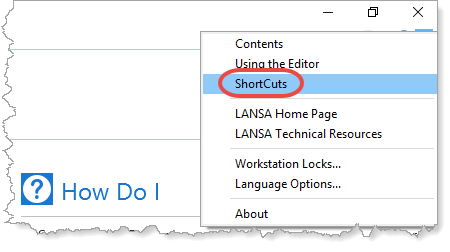
Summary
Important Observations
- There are many different ways to create a field.
- Basic field definitions can be quickly created directly from the New field dialog. Fields can be opened in the Editor to specify detailed field characteristics.
- If a field is created but not opened in the Editor, it will not appear in your Last Opened list.
- The Create as copy of field dialog allows a one-time copy operation to create a field.
- Reference fields create a permanent link between two fields. Changes to field types, lengths, etc. are inherited. Not all field characteristics, such as descriptions and labels, are inherited.
- The LANSA Repository performs referential integrity checks whenever you attempt to delete an object. For example, you will be informed if a field is used in a table or function before you proceed with deletion.
- For your test application notice that:
- The form/dialog was designed using the information from the repository.
- Default values are displayed based on the information from the repository.
- Input and output characteristics are based on the information from the repository.
- When changes were made to your field definitions, the application was recompiled to update it with the definitions.
Tips and Techniques
- Use reference fields when you need a permanent relationship between fields instead of a one-time copy.
- For actions within this module, you can use Visual LANSA with or without a mouse by using keyboard ShortCuts:

What I Should Know
- How to define a field by copying an existing repository field.
- How to manually define a field.
- How to change attributes that affect the display on dialogs and forms.
- How default values can be used by your applications.


